A Beginner's Guide To Category Design: How To Create A Category For Yourself And Your Business
Anyone can apply category design, but it requires dispelling a few myths and learning the fundamental principles.
Arrrrr! 🏴☠️ Welcome to a free edition of Category Pirates. Each month, we publish mini-books that share radically different ideas to help you design and dominate new categories. Thank you for reading, and of course, forward this “mini-book” to any friends you think need to hop aboard the Pirate ship.
Dear Friend, Subscriber, and Category Pirate,
If you’re new here, welcome to Category Pirates—the authority on Category Design and Category Creation in the world of business & marketing.
ARRRRRRRRR!!!!!!
Each month, we publish mini-books (4,000–8,000+ words) educating entrepreneurs, executives, investors, solopreneurs, and creators on how to exit the fight for “demand capture” and enter the game of “demand creation.” Because we believe the most legendary entrepreneurs & creators are the ones who don’t spend their lives fighting over old territory someone else owns, and instead go on a mission to create net-new territories that don’t exist in the world… yet.
If that’s you, welcome aboard.
(And if it’s not, feel free to walk the plank.)
Our research shows the Category King of a given market captures 76% of the economics.
It’s a winner-takes-all game.
Most marketers, entrepreneurs, creators, and investors spend their entire careers competing for only 24% of the value opportunity of a given category. And they don’t even know it.
This means that if you aren’t creating net-new territory for yourself, you are making the unconscious decision to compete over a small sliver of someone else’s plot of land.
Now, does that mean you can’t get rich riding someone else’s wave, or taking a few bites out of someone else’s pie? Of course not. Plenty of people make fortunes in commoditized categories (like real estate) doing the same thing everyone else does. It’s just worth asking yourself: are you a mercenary who just wants to make a few bucks? Or are you a missionary who wants to make a difference (in big or small ways), help people who haven’t been helped yet, and bring something new into the world?
The world’s most legendary Category Designers are the latter.
They’re Pirates.
You can read more about that here:
Category Design Myths
But before we dive in, we think it would be helpful to dispel a few myths surrounding the topic of Category Creation & Category Design.
Myth #1: “Category Design is too expensive.”
To which we ask…expensive relative to what?
In 2018, PepsiCo spent $118 million dollars on advertising Pepsi, down from $139 million in 2013. Let’s make the conservative assumption that Pepsi has spent at least $100 million dollars per year on advertising the Pepsi brand since 1984. That adds up to $3.6 billion dollars. Factoring in inflation and nominal returns from investing in treasuries, let’s call it $5 billion dollars. So, per Nielsen, if Pepsi was “average” in its marketing ROI, that means it returned $3.5 billion back in gross profits on its $5 billion in advertising.
That’s expensive.
Time and time again, data shows it’s actually Category “Competition” that's expensive. Search Engine Optimization (SEO) is a terrific example here. When you try to compete for “existing” keywords that have significant demand today, you end up spending a boatload of money trying to out-spend competitors. But when you “create” new keywords and search terms for your category, you end up achieving a leadership position that becomes more valuable over time. (Remember: everything is the way it is because someone changed the way it was.)
Category Creation is actually the less expensive option.
You can read more about that here. But heads up, you’ll want to upgrade to paid to read the entire mini-book:
Myth #2: “You don’t need a category. What you need is a brand.”
Comcast spends more than $5 billion on branding & advertising per year.
And yet, Comcast has long been considered “America’s Most Hated Company.” There’s even a Wikipedia page dedicated to the company’s inadequacies, titled “Criticism of Comcast.” (United Airlines is a close second, if you ask us.) So if branding and “shouting from the rooftops” is the key to winning the game, how come $5 billion per year can’t solve Comcast’s problems? Maybe they need $10 billion?
Most of what the business world has been taught about marketing is wrong.
What gives a brand value is the context it sits within. And that context is called a category.
Easy example: In 2011, Google spent almost $600 million building and launching a social network to “compete” with Facebook and Twitter called Google+. If “the best brand wins,” how come Google+ failed? After all, Forbes named Google the 2nd “most valuable brand in the world” in 2020.
Inside the category of search, Google is King.
Outside the category of search, Google is the next-best forgettable alternative.
You can read more about this here:
Myth #3: “Only high-tech, Silicon Valley startups can create new categories.”
Oh-so-false.
Category Design can be done by anyone and everyone—from small business owners and solopreneurs to writers, digital creators, VC-backed startups, and Fortune 500 companies.
Some of our favorite examples:
Sushirrito: The original “sushi burrito.”
MOBOT: The original “foam roller water bottle.”
Pepper: Bras for small boobs.
CarDealershipGuy: Unbiased & transparent insights into the car business.
Sometimes, creating a new category means combining two unrelated categories together (there’s sushi, there’s a burrito, and then there’s “Sushirrito”).
Other times, creating a new category means “niching down” on a particular subset of customers.
You can read more about this here:
Myth #4: “Only big, Fortune 500 companies with billions of dollars can create new categories.”
This is the other end of the spectrum—and also false.
Contrary to popular belief, more money doesn’t make it easier to create new categories (Meta’s $100B+ investment in the metaverse is an easy example). In fact, it’s usually the opposite. Big companies with hundreds of millions of dollars to spend end up having a harder time creating new categories of products, services, and platforms because they are simultaneously clinging to “what pays the bills.”
Instead, since “internal category creation” is so difficult, it’s much more common for large companies to acquire emerging Category Creators to accelerate their own category leadership position (or save themselves from being made irrelevant).
Salesforce acquiring Slack for $27.7 billion
Facebook acquiring Instagram for $1 billion, and WhatsApp for $19 billion
Disney acquiring Pixar for $7.4 billion, Marvel for $4 billion, and Star Wars for $4 billion
These are all prime examples of Radical M&A—paying a premium to own the Category King in the emerging, or tangentially relevant, category.
You can read more about this here:
A Beginner’s Guide To Category Design: How To Create A Category For Yourself And Your Business
Anyone can create a category.
Sometimes, a new category in the world can “put a dent in the universe.” And other times, a new category simply means combining sushi and burritos.
Either way, your goal as an entrepreneur, executive, or creator is to become known for a niche you own.
Here’s how:
The Magic Triangle
The Magic Triangle is the combination of Product Design, Company Design (or Business Model Design), and Category Design—each side with equal importance, ideally executed at the same time.
Product Design: The purposeful building of a product and experience that solves the problem the category needs to be solved. The goal here is what the business world traditionally calls “product-market fit”—which we see as strategically flawed thinking. What you really want is “product/category fit” (which we’ll clarify later in this letter).
Company Design: The purposeful creation of a business model and an organization with a culture and point of view that fits with the new category. The goal here is company/category fit, meaning you have engineered the right business model and missionary team for the problem you are looking to solve.
Category Design: The mindful creation and development of a new market category, designed so the category will pull in customers who will then make the company its Queen. In marketing terms, this is about winning over popular opinion and teaching the world to abandon the old and embrace the new.
All three elements—Company Design, Product Design, and Category Design—work together
and balance each other to exert great force on a company’s success and value. And the legendary, enduring companies get the three elements of Company Design, Product Design, and Category Design in such a state of synchronicity that they reinforce each other.
You can read more about The Magic Triangle here:
The Category Design Scorecard
How do you know when you’re looking at a category creator versus just another high-growth company fighting tooth and nail for market share in an existing category?
The Category Design Scorecard will tell you.
We created this scorecard after reviewing companies from the Fortune 100 Fastest-Growing Companies list and analyzing their 10Ks, Annual Reports, Investor Presentations, and Investor Relations websites. Companies were scored in five key areas on a 0 to 2 scale: 0 being the company does not successfully accomplish each area’s goal, 1 being the company partially accomplishes the goal, and 2 being the company successfully accomplishes the goal.
(Area 1) Category POV: Does the company have a clear “Point of View” of their category? Are they able to frame a powerful problem, articulate a compelling vision, and most importantly, communicate the core compromises, trade-offs, and problems inherent to the way the category is today, such that the consumer/customer will be open to a new and different approach? It’s important to note this should not be expressed as the “challenges” unique to a brand or company, but rather a fundamental problem to the entire category itself that consumers have typically and unnecessarily accepted as a given.
(Area 2) Future Category Reimagined & Without Compromise: Does the company cast a compelling future—free of these fundamental problems, compromises, and trade-offs inherent to the category? Are they able to explain what the category looks like in its true glory where the customer/consumer is transformed, partners are proud participants, and the company generates an abundance and surplus of benefits: rational, emotional, aspirational, as well as financial?
(Area 3) Radically Different Offer + Business Model: How does this new category get delivered to the customer, both through a breakthrough product/service/offer, but also through a breakthrough business model? How do product and business model innovation come together in a way where 1 + 1 = 11?
(Area 4) Data Flywheel: Does the company generate data about customer/consumer demand/preferences (be it intentional or as a side effect) that creates a unique opportunity and advantage to anticipate the future of consumer demand and any category shifts? Does this Data Flywheel provide insight into not only how to improve company offerings, but predict where demand for this new category will unfold next?
(Area 5) Depth & Degree of Customer Outcomes: Does the company generate satisfied/ecstatic customers/consumers? Are they so happy and satisfied they gladly evangelize the product/service to others? Or, even better, do customers want to tell their own stories of radical transformational outcomes—where the customer’s life is truly different after engaging with the company?
You can read more about The Category Design Scorecard here:
The Big Category Lie
The more we write about Category Design, the more we encounter the same 8 reasons why people believe Category Design doesn’t work:
“You can’t create demand out of thin air.”
“It’s too expensive.”
“It’s not about categories. It’s about the best product, the best marketing, or the best price.”
“People don’t like change.”
“It is a smarter strategy to wait to capitalize on macro trends.”
“24% of a big market can still be a huge number—why reinvent the wheel?”
“We can’t explain this to our stakeholders.”
“Product positioning is a superior/less risky strategy.”
However, if you say Category Design doesn’t work, what you’re really saying is “Category Design doesn’t work for me.”
But you don’t actually believe it doesn’t work.
And your credit card statement is all the proof you need:
Do you have a Netflix subscription?
How about Amazon Prime?
Do you use Uber?
How often do you eat at Chipotle?
The vast majority of anyone’s spending, and the majority of where people spend their time, is with Category Creators. (What’s the likelihood your 5 closest friends also have Netflix subscriptions? Conversely, do you hear any of them bragging about how they just signed up for Peacock? Any Red Bull Cola drinkers in your family? Or perhaps you’re a fan of BlueJeans, the next-next-next-next-best video conferencing alternative to Zoom?)
Which means, by definition, if you use any of the companies dominating their respective category (or any other Category Creators—in big or small categories), then you believe in Category Design.
Implicitly.
You can read more about The Big Category Lie here:
How To Design A Category Breakthrough
Imagine for a moment you’ve just been fired from your company—whether it be a global enterprise or a garage startup. No one is hiring. You have a kid on the way. And your only option is to create a new and different future for yourself.
To facilitate a productive and powerful brainstorming session, work through these questions in order:
What does our business look like today? What’s happening in the world, and how might we expect the future to play out?
What business models do we believe will be most successful ten or twenty years from now?
What products will the world want based on all the new tailwinds in today’s economy?
What new category could we create that would inherently leave the old category to die?
What new and different future can we invest in that would fundamentally change the trajectory of our category and business?
What different future would crush the 'old employer’s category'? (For example: Hey, broadband providers, Elon’s trying to make your category go away by creating a new one. Powered by satellites. Bummer about your investment in all those wires.)
What are the 3-5 future scenarios that incorporate all of the above? (We recommend using the Category Design Scorecard here.)
Scenario 1 = Incremental changes to the current category
Scenario 2 = Demand shift leading to new products, but the same business model
Scenario 3 = Demand AND business model breakthroughs
Scenario 4 = Demand AND business model AND data flywheel breakthroughs, where demand can be anticipated well in advance of it materializing
Scenario 5 = Turbo-charged scenario 4 with such a gravitational pull that we re-invent not only our category but several adjacent categories around us
What must be true to believe in each scenario?
NOTE: This is not “what is true” or “what will be true.” This is a bar that is too high for anyone. Instead ask, “What else would you need to believe for this scenario to come to fruition?” It’s a lower bar, and also a signal you can spot earlier—much like feeling an ache in your bones before it rains a day later.
You can read more about How To Design A Category Breakthrough here:
7 Ways To Niche Down
How you create a category for yourself as a small “e” entrepreneur is not just about niching down and getting more specific about your offering.
It’s about having a Point Of View.
Why are you niching down?
What problem are you determined to solve in the world?
Who do you want to help?
Who do you not want to help?
Why is it so important to you? And why is it so important to the people you want to help?
What will life be like on the other side (tell us!)?
“Niche down” opportunities combined with a Framed, Named, and Claimed unique & differentiated POV is the key to getting out of The “Better” Trap and enjoying a life where you have no competition.
You’re in a category of one.
So, ask yourself these questions:
WHAT do you do… that you are uniquely known for?
WHO do you do it for… who are surprisingly willing to pay large premiums?
WHEN do you do it… that sits at the peak intersection of Important and Urgent?
WHERE do you do it… that if money were no object, everyone would want it?
WHY do you do it… that is so in sync with the Superconsumer, word of mouth spreads like wildfire?
What OUTCOME do you unlock… that is 100x more valuable than the price you charge?
How much and “how” does it COST… that is both a value & a premium, and the ‘way you pay’ is a benefit in itself all at the same time?
Each area is an opportunity for you to execute a No Ocean Strategy, meaning you CREATE something in the world that previously did not exist. And the more of these “niche down” opportunities you combine together, the more different you are—and the more difficult it becomes for someone else to “do what you do.”
You can read more about How To Niche Down As A Small “e” Entrepreneur here:
Evangelize Your Radically Different POV
Your POV is the script/soundbites customers use in word-of-mouth marketing.
When a company says, “We are going to digitally transform the media industry,” what they are really saying (listen to the words) is, “We are going to take what exists and make it digital.” Something exists. Then this new thing came along. And we’re going to apply the new thing to the old thing, and call the old thing new. They start with the way it is, and aim to make the way it is “better” or “incrementally different.”
This starting point (insignificant and nuanced as it may seem) is what then dictates every single outcome that unfolds. If your POV is bound to the way it already is, then the company has just signed itself up for a lifetime of competition before it has even started. Because when you start with the way it is, rather than the way it could be, you constrain yourself from the start—and you don’t even know it.
The smartest people in business do this every single day.
“We are going to disrupt the hotel industry” = “We accept the hotel industry as it currently exists, and we are going to change the hotel industry based on the already established definition of what the hotel industry is.”
“We are going to transform the taxi industry” = “We accept the taxi industry as it currently exists, and we are going to incrementally change the taxi industry based on the already established definition of what the taxi industry is.”
“We are going to digitize the movie rental industry” = “We accept the movie rental industry as it currently exists, and we are going to incrementally change the movie rental industry based on the already established definition of what the movie rental industry is.”
Founders, investors, bankers, lawyers, and the vast majority of the business ecosystem take whatever is placed in front of them and say, “I accept the premise.” There is very little questioning about whether they are having the right conversation (context) to begin with. As a result, a company’s (or creator’s) POV is unconsciously established (“We are going to incrementally change the future based on the past”), and every product, document, and decision that unfolds from there follows that POV—resulting in a lifetime of comparison.
You can’t create a different future when your starting reference point is the past.
Here are a few of our favorite POVs:
Keurig: “Single-serve coffee.” It’s not a cup of coffee you buy from a coffee shop. It’s not a pot of coffee you find leftover in the office kitchen. It’s a pod you put in a device and voila: a single cup of fresh, hot coffee—made just for you, by you.
iRobot: “Robot vacuum cleaner.” It’s not a vacuum cleaner “with more horsepower.” It’s not a vacuum cleaner with more knobs, bells, suction tubes, and whistles. It’s a robot vacuum cleaner that doesn’t require you to vacuum on a daily basis. WOW!
Royal Canin: “Tailored health nutrition for cats & dogs.” It’s not “better” dog and cat food. It’s a personalized, breed-specific dog and cat food. It’s a different thing.
SLO AXE: “Mobile Axe Throwing.” Why go to an axe-throwing bar (yes, this is a new category) when the axe-throwing can come to you? (Pirate Christopher’s family did this, and it was a blast!)
You can read more about The Power Of A POV here:
Frame It, Name It, & Claim It: Languaging
Category Design is a game of thinking.
You are responsible for changing the way a reader, customer, consumer, or user “thinks.” And you are successful when you’ve moved their thinking from the old way to the new and different way you are educating them about.
The way you do this is with words.
This means if you can’t write what you’re thinking, then you aren’t thinking clearly. And if you aren’t thinking clearly, then how are you going to change the way the reader, customer, consumer, or user thinks?
We believe this is one of the most under-discussed, unexamined aspects of business & marketing today.
When President Biden ordered U.S. immigration enforcement agencies to change how they talk about immigrants and exchange terms like “Illegal Alien” for “Undocumented Noncitizen,” that’s Languaging.
When the dairy industry spends 100 years educating the general public that milk comes from cows, and then someone comes along and introduces “Almond Milk” (or Oat Milk, or Flax Milk), that’s Languaging.
When the whole world understands what an acoustic guitar is, and Les Paul comes along and starts wailing away on an “Electric Guitar,” that’s Languaging.
Languaging is about creating distinctions between old and new, same and different.
Category Queens deliberately use Languaging to do a few things:
To differentiate themselves from any and all competition through word choice, tone, and nuance.
To speak to (and speak “like”) the customers they want to attract, especially the Superconsumers of the category.
To further establish their position in the category they are designing or redesigning.
To insinuate and give context to the 8 category levers: price, profit model, branding, etc., and how the company executes any number of them in a different way.
Languaging educates the customer on the experience you are proposing: Streaming video implies a very different experience than getting in your car, driving to your local Blockbuster, and renting a video. The same goes for today’s contactless pick-up at grocery stores and restaurants versus the standard “pick-up” practices.
Languaging frames the perceived value of your product or service: A medium coffee is perceived to be cheap, but a "Grande" coffee is perceived to be expensive.
Languaging hints at the benefits that come with radically different manufacturing: An e-book is a dematerialized book. It can be produced infinitely, distributed infinitely, edited and uploaded in an instant, etc.
Languaging also hints at the benefits that come with radically different distribution: OnlyFans calling creators you invite to the platform using your referral link “Referred Creators” signals the benefits of their flywheel and the money you can earn as a result.
Languaging is the “hook” customers, consumers, and users latch onto in your marketing: Substack’s paid newsletters are a different thing than Mailchimp’s free newsletters. Marketing something fundamentally different is always easier and more enticing to the customer than trying to market something that is “better” than what currently exists but is still the same kind of thing.
Languaging also signals to customers how to think about paying for your product or service: Paying a subscription is different than buying products individually. Or purchasing in-game items inside a free video game is different than playing a freemium game with ads. (May of these words and phrases did not exist until recently and were purposely used to design new categories.)
You can read more about Languaging here:
The Big Brand Lie
Have you ever met someone who’s been drafted into a cult?
Did you know it’s possible to be in a cult and not know it?
A meaningful percentage of marketers, entrepreneurs, and executives are in what we like to call “The Brand Cult.” They’ve been taught the best (aka: “the most well-known”) brand wins.
Even though the data shows this is not true.
Ford spends $2.5 billion per year on brand advertising, with a market cap of $50 billion. General Motors spends $3 billion, with a market cap of $70 billion. Meanwhile, Tesla spends $0, but it has a market cap of $700 billion. What?!?
In 2011, Google spent almost $600 million building and launching a social network to compete with Facebook and Twitter called Google+. If “the best brand wins,” how come Google+ failed? After all, Forbes named Google the 2nd “most valuable brand in the world” in 2020.
But sharing data with a cult member is about the worst thing you can do. That’s because facts are upsetting to feelings—particularly facts that disprove everything you’ve been taught to believe.
Well, here’s a fact:
Categories make brands. Not the other way around.
Most small ‘e’ entrepreneurs intuitively understand branding hierarchy in category design.
Whereas most MBAs from Ivy League schools (wearing pleated pants and blue button-downs) do not.
For proof, look at any local sign for a dentist.
BIG FONT: DENTIST
Small font: Mark Johnson, DDS.
Or, how about your local landscaping company?
BIG FONT: LANDSCAPING
Small font: Miller’s Landscaping Since 1992
Or how about your plumber? What does the side of their truck say?
BIG FONT: PLUMBER
Small font: O’Connor Plumbing. Call us today!
Category first, brand second.
You can read more about this concept in The Big Brand Lie here:
The Big Product Lie
There is a lie perpetuated from Silicon Valley and San Francisco all the way to “startup alley” in New York, and everywhere in between (Los Angeles, Austin, Portland, Miami, Chicago, etc.), as well as startup hubs all over the world.
And the lie goes like this:
“The best product wins.”
The goal of every entrepreneur, then, is to build the best product. How? Put the incumbent of the industry you want to “disrupt” in your sights, funnel tens (or hundreds) of millions of dollars into your scope, and build a “monster” product. Wipe them off the face of the earth. Show their customers how much better you are than them. And when you’re done? Hire a new CEO, bump yourself up to Chairman, and go on a speaking tour spreading the good word: “The best product always wins.”
There’s just one problem.
The best product does not always win.
Product Design Is ⅓ Of The Magic Triangle (Company Design & Category Design are the rest of the magic)
A legendary product alone is necessary, but not sufficient.
If you truly believe “the best product always wins,” you are really saying:
The company, team, and business model get zero credit
Naming & Claiming a new and different category gets zero credit
The data flywheel (inside The Magic Triangle) gets zero credit
Of course, this is false.
So then what’s the right ratio?
Does the product deserve 50% of the credit? (And the company, team, business model, category, and data flywheel can share the remaining 50%?)
Or isn’t it fair to say, at a minimum, all 3 sides of The Magic Triangle take equal credit?
The product matters
The company and team and business model matter
And the category matters
If this is the case, it’s irrational to believe “the best product wins." It's more realistic to say, “The product is of equal importance to the company, the category, and the team’s ability to leverage its data flywheel to anticipate the future.” They all matter. And while building legendary products is one (crucial) side of The Magic Triangle, it is far from “the whole thing.”
Which is why we believe it’s important to say: myopically building “the best product” is a mistake.
You can read more about The Big Product Lie here:
Avoid The “Better” Trap
“Better” is a trap.
But even the world’s most successful, most legendary category designers make this mistake.
Google thought they could build a “better” social network than Facebook called Google+ (which became known as a “sad, expensive failure”).
Microsoft thought they could build a “better” in-store experience than Apple (which resulted in $450 million in losses on the company’s balance sheet).
What’s really happening here is the company is making the unconscious, unquestioned, unconsidered, undiscussed decision to carry their brand into someone else’s category and try to convince the world that their product is “better.” It happens all the time. And it’s always a disaster. But because so many people have been recruited into the “better” product and “better” brand cults, this behavior will likely continue for the rest of time.
Anytime a company makes a comparison statement, they are falling into the “better” trap.
Here are some easy-to-spot examples:
Faster (faster than...what?)
Smarter (smarter than...what?)
Cheaper (cheaper than...what?)
More economical (more economical than...what?)
Most efficient (most efficient compared to...what?)
Words that end in -er and “most/more-than” statements imply comparison. Because in order for something to be fast-er or smart-er or cheap-er, something else has to exist to give it meaning.
Category designers, on the other hand, focus on creating a different future. The need to draw a product/feature comparison is irrelevant.
You can read more about this here:
A Super Of 1 Is A Super Of 9
Do you know how to spot a Superconsumer?
A “Super” is the scrapbooking fanatic who owns not one, but a dozen different pairs of scissors—each one designed to cut various shapes from paper.
A “Super” is the online course enthusiast who buys not one, but a degree’s worth of online courses—each one providing slightly different information than the last.
A “Super” is the photographer who shoots with not one, but a backpack full of cameras, lenses, and filters—each one playing a crucial role in crafting the perfect photo.
A “Super” is the first to download a new category of app, email the founders with their feedback, and simultaneously invite their closest friends to try the beta version.
A “Super” is the kind of person who knows your category better than anyone else—oftentimes, even better than you do.
We all have friends who are Supers. We can spot them from a mile away.
They’re the winos who arrive for a casual night of drinks with seven different types of wine glasses. They’re the rave attendees who show up wearing lime green booty shorts, multicolored rainbow faux rhinestone fringe epaulets, and a homemade iridescent sequin top (an outfit the average consumer wouldn’t know the first thing about assembling themselves). They’re the self-help readers who own every book in the genre, the sound engineers who collect studio amps and vintage microphones, the project managers who pay for software tools out of their own paychecks just because they want to try the newest organization platforms the moment they’re released, and the music fans who like to brag about how they were listening to rock band Greta Van Fleet before they won a Grammy.
In short, they’re the consumers pushing the category forward (whether they realize it or not). They are receptive to the new. They are looking for “different.”
The Power of Superconsumers
In 2016, Pirate Eddie published a legendary book with Harvard Business Review Press called Superconsumers: A Simple, Speedy, and Sustainable Path to Superior Growth (coincidentally, the same year Pirate Christopher published Play Bigger). The insights in the book were generated from a data set of over 125 consumer-goods categories representing more than $400 billion in sales, with consumer purchasing behavior analyzed across multiple demographics.
The biggest benefit of Superconsumers comes down to simple math. Pound for pound, Supers generate the most power in a category—analogous to the power of Bruce Lee’s ‘one-inch punch.’
Although Supers are few in number—usually about 10% of consumers for a particular product or category (not 10% of your customers)—they can drive between 30% and 70% of sales, an even greater share of category profit, and 100% of the insights. What is often missed or misunderstood, however, is that Supers drive >100% of the ‘share of growth,’ which Pirate Eddie also wrote about in the Harvard Business Review. Note that the Superconsumer phenomenon is even more extreme in digital categories, where 6% of New York Times subscribers drive 67% of their revenue and 0.15% of casual gamers drive 50% of in-app purchases.
Superconsumers are:
Emotional buyers who base their purchase decisions on their life aspirations (because the products they buy represent their love and identity attachment to the category)
NOT price-sensitive (because they have emotional and aspirational connections to the products they love, and are usually willing to spend more overall AND pay a higher average price per unit)
More predictable than other consumers (since the root cause of their behaviors is deep emotions and motivations rather than socioeconomics or demographics)
Willing to offer wisdom and new insights about product potential within the category (since they are the ones most intimately familiar with all the current product options out there)
Most likely to introduce potential Supers to your new category of product (potential Supers represent 20% of a category’s consumer base, and respond well to the same advertising, marketing, and product innovations that Supers do)
In essence, Supers are the key to category design because they're the ones who make your company’s Data Flywheel spin. (And if you own the Supers in your category, you win.)
You can read more about Superconsumers here:
DAM The Demand
Most businesses fight for demand.
There is no finer example than the $80 billion-dollar industry dedicated to Search Engine Optimization. Here, companies and solopreneurs compete for the same handful of keywords and search terms, hoping to convince customers to click and purchase from them instead of one of their competitors. This is akin to kids jumping up and down yelling, “Pick me! Pick me!” Or muscle men walking around on stage in front of judges with numbers on their teeny-tiny mankinis, hoping they’ll get picked for the trophy.
From early in life, we’re taught to compete in a pre-existing game of comparison designed by someone else (read this sentence 3x).
In doing so, we unconsciously submit to someone else’s rules.
In business, this seems smart. Buy Google Ads for the keywords that indicate someone is already shopping and yell, “Pick me! Pick me!” The unquestioned rationale is: demand exists, and if our business can tap into that existing demand, we will find customers—and customers lead to profits.
There’s just one problem.
Businesses that compete for demand fall into product comparison conversations, often in categories with existing leaders.
They walk into these existing markets saying, “We do the thing the already established Category Queen does, just better/faster/smarter/stronger/cheaper.” The founders, investors, and well-educated executives who champion this business strategy believe they are doing the smart thing, de-risking their efforts by bringing an improvement to a proven market.
These people are not Pirates.
So, how do you capitalize on existing demand without falling into the product-comparison race to the bottom?
You DAM the demand.
Often when we introduce newcomers to the concept of category design, the response we hear is, “How do we create something out of nothing? Creating demand out of thin air sounds hard and risky.”
You’re right.
Which is why a “DAM the demand” strategy is so powerful. It’s about interrupting customers when they are shopping, and then educating them on the advantages of heading in a new and different direction. (“You think you want that, but you really need this!)
This is the Aikido (Japanese martial arts) move of category design, using the momentum of the legacy category to your advantage. When you’ve successfully DAMed the demand, you have raised an urgent question in the customer’s mind:
“I thought I wanted X, but maybe what I really need is Y?”
And it’s in this question, this gap between what they thought they wanted and what they didn’t know they needed, where you have the opportunity to educate customers on the differences between the old category and the new one you are creating/designing. DAMing the demand is not a product-to-product comparison. It is a category vs category debate, and involves telling the truth about the existing category and using the enemy’s strengths (acknowledged by them and everyone in the category) against them.
There is no sales pitch, no shouting match, no “Pick me! Pick me!”
Just a cool, calm, and collected education on “The Gap” between what the market considers to be the best (or sometimes, the only) solution, and what they should now consider as a new and different way forward. And it’s this truth-telling that stops customers in their tracks—because beholden as they might be to the legacy category, they are also painfully aware of its limitations. Further, this truth-telling permanently disables the Category Queen and all the competitors chasing “existing demand” in the old category.
Because when you DAM the demand, you’re moving buyers in the category FROM the old TO the new. (We call these FROTOS.)
You can read more about this here:
The Lightning Strike Strategy
Most annual marketing planning is an orgy of frustration and mental masturbation.
(An image of a conference room—or, in today’s digital world, a bunch of Zoom boxes muting and unmuting—of executives tripping over each other, spurting out “creative ideas” and a long list of “P1 priorities” should come to mind.)
At best, a company will audit its metrics from the previous year and decide which initiatives to spend more money incrementally improving. At its worst, the CFO is the one coming up with the slogan that’s going to go on the billboards the company is planning to run for its next product launch. Either way, annual marketing planning is usually about as fun and productive as getting hit with a hockey puck in the privates.
The first problem with marketing plans is most of them start with last year’s marketing plan as the template.
But legendary plans are about creating a different future. Not continuing the past.
The 3 Pillars Of Every Great Marketing Strategy: Information Wars, Air Wars, and Ground Wars
To begin, it’s important we outline what a legendary marketing strategy looks like.
Every startup, company, and creator is fighting 3 different types of wars at the same time: the war for who frames the problem, names and claims the solution, and as a result owns the narrative (The Information Wars); the war for who is then able to most effectively “sell” that narrative at scale (The Air Wars); and the war for who can best convert new recruits to the war effort—prospect to prospect, customer to customer, consumer to consumer, and thus make the cash register sing. (The Ground Wars).
Here’s a quick summary of each:
Information Wars: This is what sets the strategic context. (Context is everything.) It’s the combination of ways in which you educate the world about the category you’re designing, AND, learning from your Superconsumers (and amplifying their voices) to accelerate your effectiveness both in the air and on the ground. (This is more focused on POV marketing / word of mouth than anything else.)
Air Wars: In many ways, marketing is “Sales at scale.” Air Wars are the high-level strategic marketing you do in service of the new and different category you are creating in the world, all the while positioning yourself as the leader. These efforts are more focused on demand creation.
Ground Wars: This is tactical marketing (often at the point of sale and heavily integrated with sales) that supports your strategic efforts in marketing the category and driving near-term revenue. (Ca-Ching, Ca-Ching.) These efforts are more focused on demand capture and lead generation.
You can read more about this strategy here:
Rethinking Discount Marketing
During the busiest shopping season of the year, do you want to do what most people do?
Or do you want to do something DIFFERENT?
If you start with, “I reject what Black Friday stands for,” you may work your way back and end up accepting the premise (“Couponing works!”), or you may end up accepting part of the premise (“Couponing works if we also do XYZ along with it”). But one thing is for certain: if you start with the thinking, “Black Friday is important; Black Friday is when everyone makes money; and the thing to do on Black Friday is to offer a huge discount,” you aren’t going to stand out, and more importantly, you aren’t going to drive any meaningful outcomes for your business.
All you’re doing is playing a game called: “Whoever sells the most TVs, wins.”
Instead of blanket discounting, we encourage you to ask a series of more thoughtful questions:
“What’s the real outcome we want to drive? Is it revenue? Is it lead generation? If we run a coupon promotion and capture a ton of leads, will those leads be the ones we want?” (Remember the Glengarry leads?)
“Do we want to leverage Black Friday to capture existing demand or create net-new demand?”
“How can we use Black Friday as not just an opportunity to generate short-term revenue, but also build our category over the long term?”
“Is there a radical stunt that we could pull off to drive home our POV?”
You can read more about Rethinking Black Friday & Discount Marketing here.
A Pirate’s Guide To A Legendary IPO
There is arguably no more important moment in a company’s life than the 18-24 months preceding the IPO.
This is when the vision for your company is crystallized. Employees, executives, and investors finally get to take some cash off the table for all their hard work. And the market is forced to put its money where its mouth is.
And yet, 60% of IPOs are failures.
According to research published by CNBC, “More than 60% of more than 7,000 IPOs from 1975 to 2011 had negative absolute returns after five years in the secondary market. More recently, from 2000 to 2016, the six-month absolute and excess return has been both negative.”
Why?
Because when it comes time to go public, much of the conventional wisdom bestowed upon company executives by investors and bankers encourages “sameness.” (Just like how modern business thinking is about competing, building the best brand, and having the best product.) The overwhelming belief is that raising money is all about fitting into competitive frameworks—or “comps.” Comps (comparables) are what allow bankers and Wall Street to easily define your “competitive set” (or comparable set) and understand a “fair” valuation, all with the goal of figuring out how to price you, in comparison to other companies, correctly.
In order to play this game, you must accept the premise that companies from the past are the harbinger and anchor for determining your future value.
We call this The Languaging Gap:
The message you think you’re communicating...
VS
The message investors, stakeholders, employees, and Wall Street are actually hearing.
When you use Languaging (the strategic use of language to change thinking) in your company and category design, as well as your IPO S-1 documents and road-show materials, and you’ve successfully closed The Languaging Gap, what you will hear from Wall Street is, “We like the story.” (Bankers, analysts, and investors use these exact words.) This one, simple phrase is a clear signal the DIFFERENT future you are evangelizing is resonating—and investors are willing to go on that journey with you.
You can read more about IPOs here:
Start Creating Categories!
We hope this Beginner’s Guide helped give you a high-level perspective of all the different ways you can differentiate yourself and your business.
If you found this mini-book valuable, we encourage you to check out some of our other free favorites:
To access our entire mini-book library, become a paid subscriber 👇
ARRRRRRRRRR!!!!!!!
Category Pirates 🏴☠️
P.S. - If reading this taught you something new and different…
Click the ❤️ button on this post so more people can discover it on Substack. 🙏 🏴☠️
And if you’d like to go down the Category Design rabbit hole even further, we encourage you to dive in to our books:




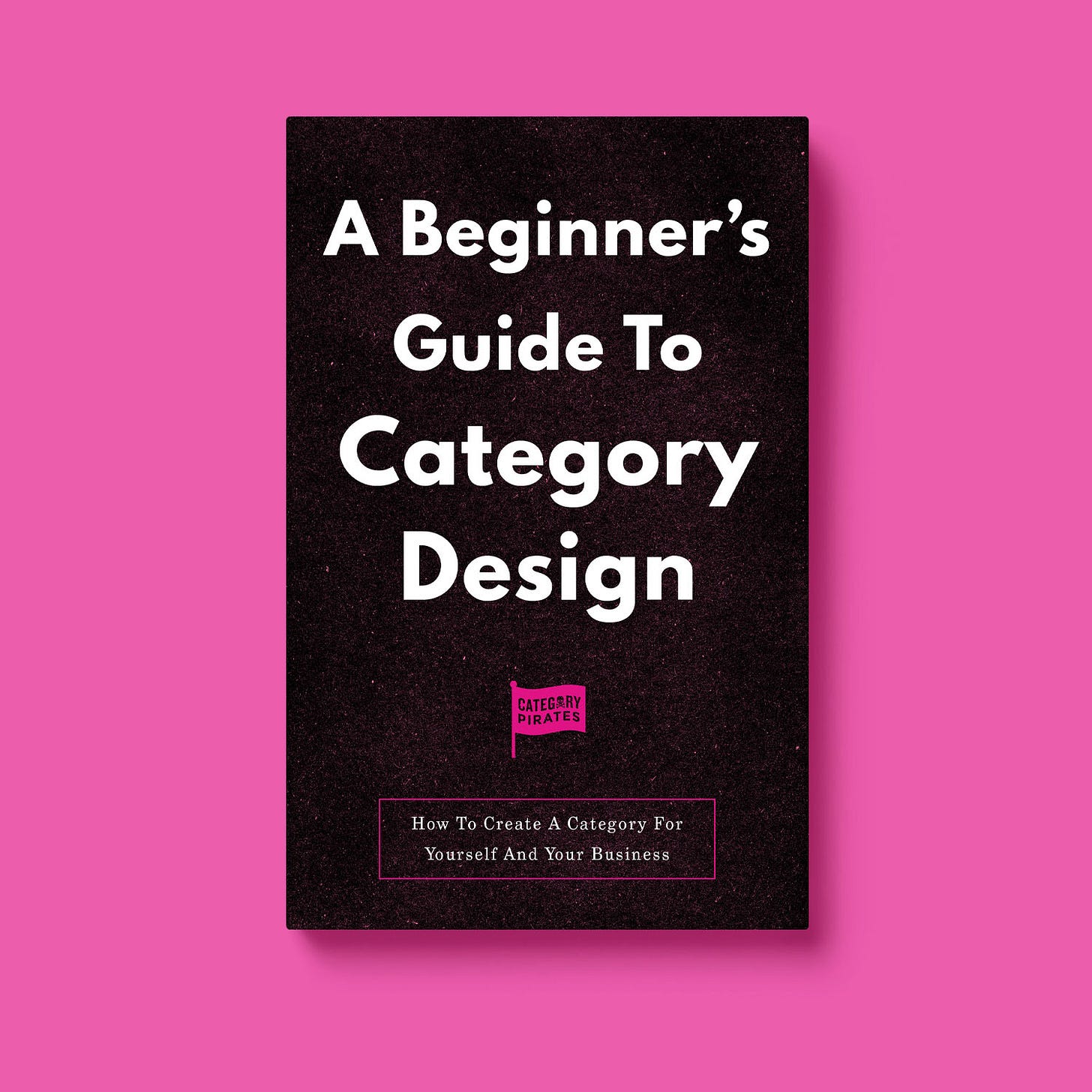
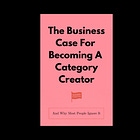

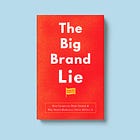
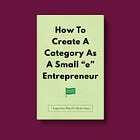
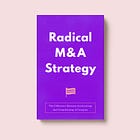
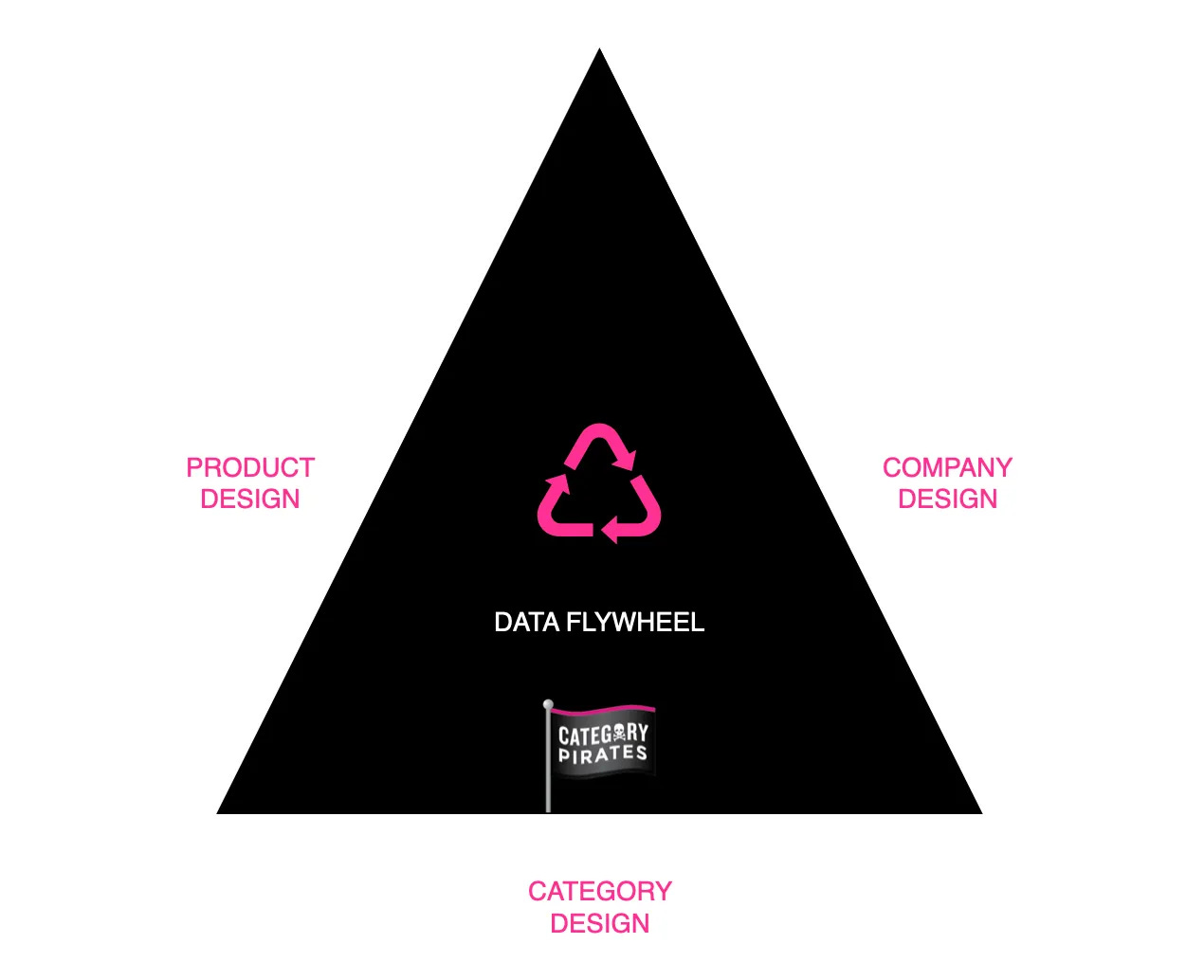
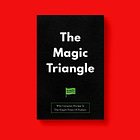
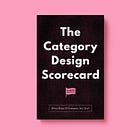
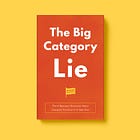
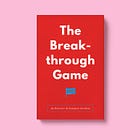
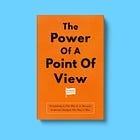
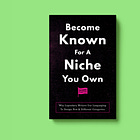
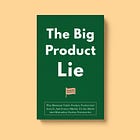
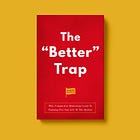
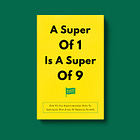
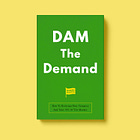
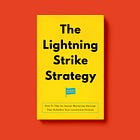
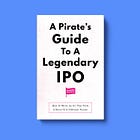
This is one my faves. Good work, mateys. 🏴☠️
Brilliant post. Thanks for covering everything in so much detail.
I’m at a point in my life where I have a hand (or maybe just a finger) in several different pies in different categories and I could really do with focusing more on which category I want to be in.
This has given me lots to think about.